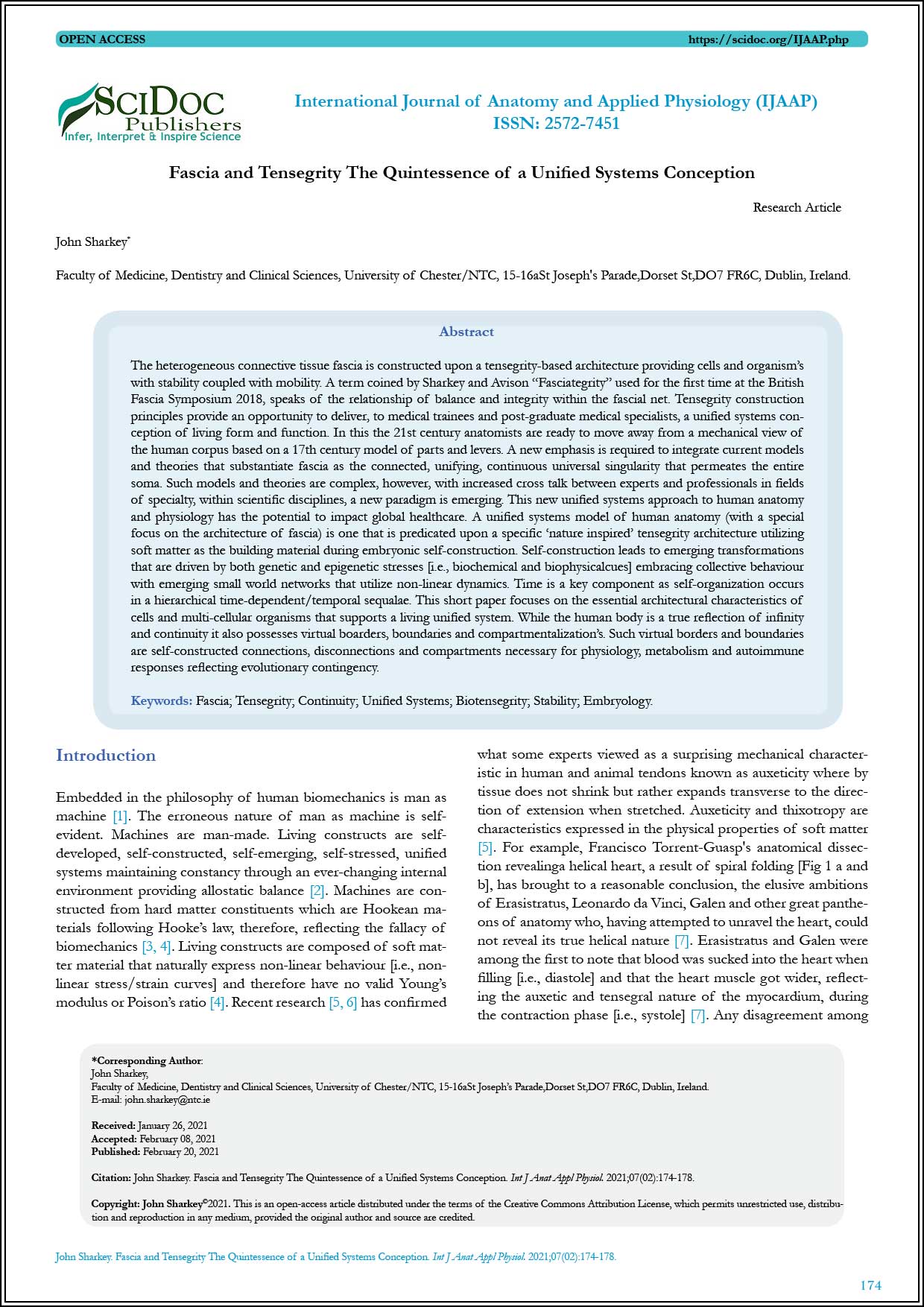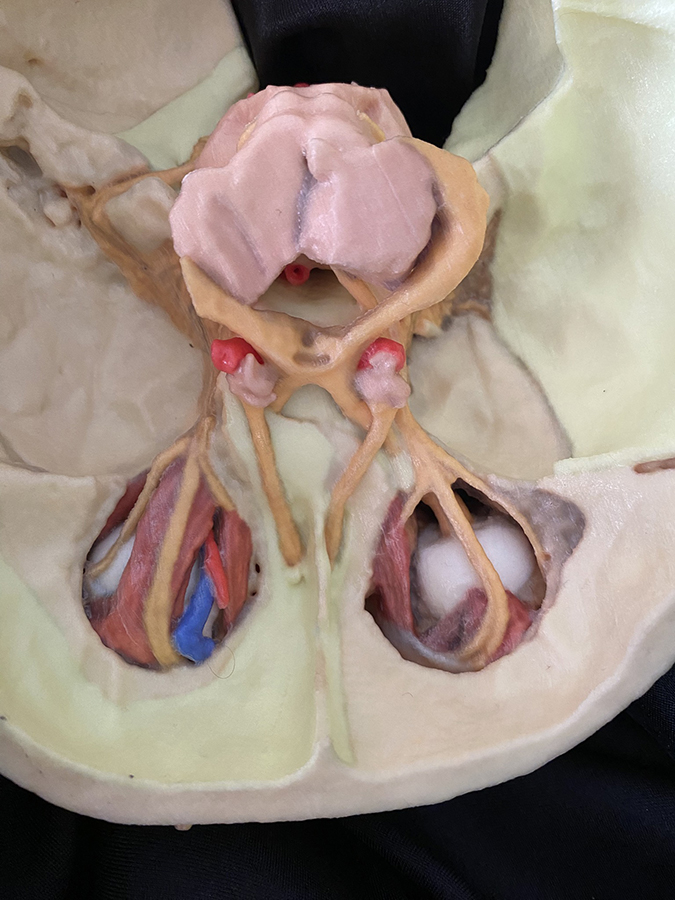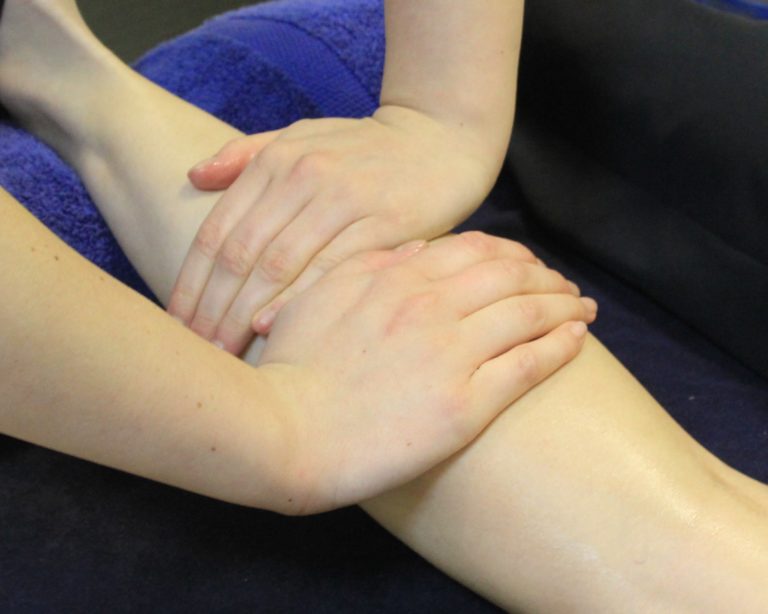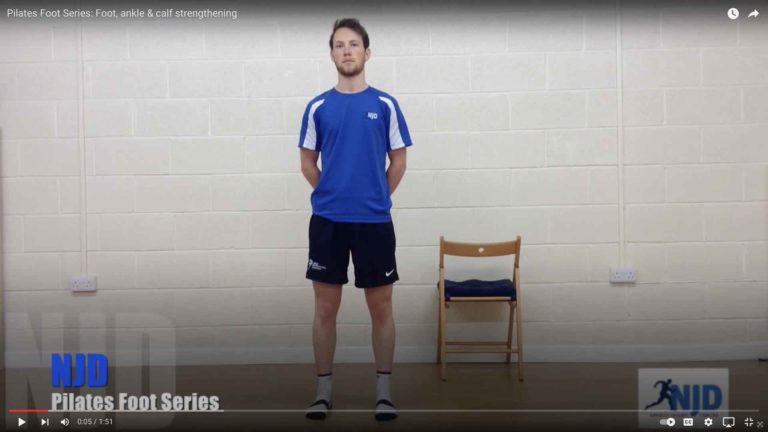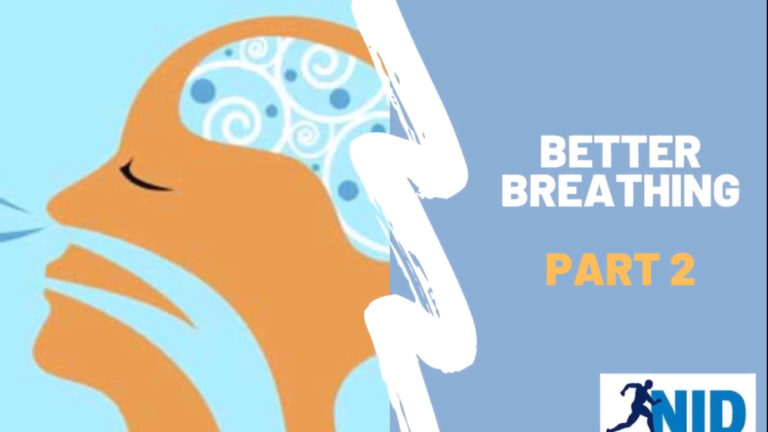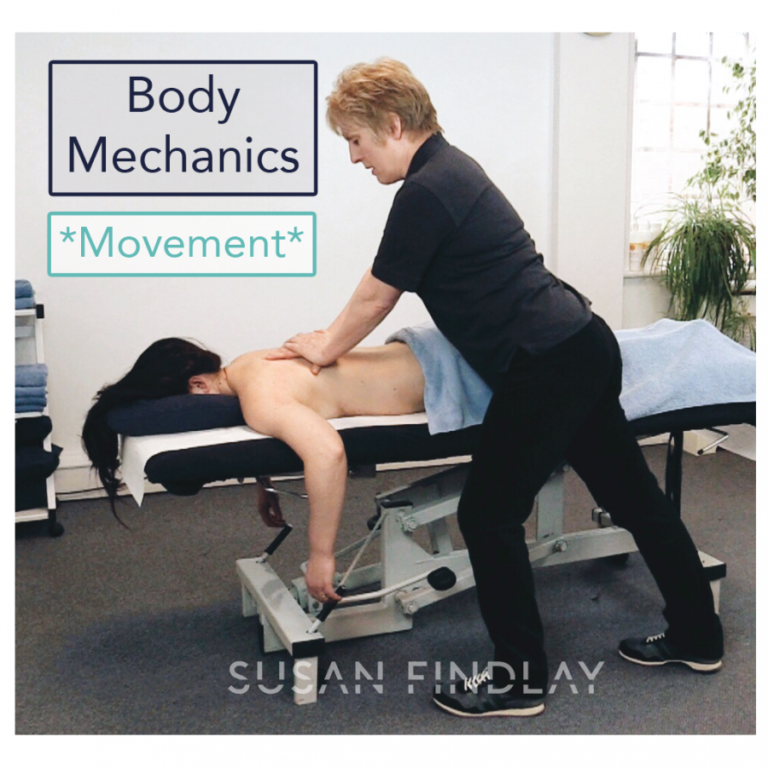Abstract
The heterogeneous connective tissue fascia is constructed upon a tensegrity-based architecture providing cells and organism’s with stability coupled with mobility. A term coined by Sharkey and Avison “Fasciategrity” used for the first time at the British Fascia Symposium 2018, speaks of the relationship of balance and integrity within the fascial net. Tensegrity construction principles provide an opportunity to deliver, to medical trainees and post-graduate medical specialists, a unified systems conception of living form and function. In this the 21st century anatomists are ready to move away from a mechanical view of the human corpus based on a 17th century model of parts and levers. A new emphasis is required to integrate current models and theories that substantiate fascia as the connected, unifying, continuous universal singularity that permeates the entire soma. Such models and theories are complex, however, with increased cross talk between experts and professionals in fields of specialty, within scientific disciplines, a new paradigm is emerging. This new unified systems approach to human anatomy and physiology has the potential to impact global healthcare. A unified systems model of human anatomy (with a special focus on the architecture of fascia) is one that is predicated upon a specific ‘nature inspired’ tensegrity architecture utilizing soft matter as the building material during embryonic self-construction. Self-construction leads to emerging transformations that are driven by both genetic and epigenetic stresses [i.e., biochemical and biophysicalcues] embracing collective behaviour with emerging small world networks that utilize non-linear dynamics. Time is a key component as self-organization occurs in a hierarchical time-dependent/temporal sequalae. This short paper focuses on the essential architectural characteristics of cells and multi-cellular organisms that supports a living unified system. While the human body is a true reflection of infinity and continuity it also possesses virtual boarders, boundaries and compartmentalization’s. Such virtual borders and boundaries are self-constructed connections, disconnections and compartments necessary for physiology, metabolism and autoimmune responses reflecting evolutionary contingency.
Keywords: Fascia; Tensegrity; Continuity; Unified Systems; Biotensegrity; Stability; Embryology.
Not joined up yet?
There’s plenty of reasons to join the LCSP Register
Insurance Partners
Our dedicated team can tailor individual policies to suit your specific needs
Workshops
Keep your skills up to date with CPD Workshops and courses
Business Support
Advice tailored to working in the private sector
Find a Therapist
Our directory of therapists searchable by the general public
Welfare Officer
Supporting members who may have situations of difficulty where they need assistance, guidance or reassurance.
